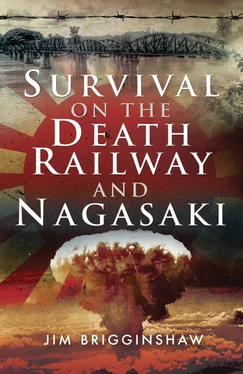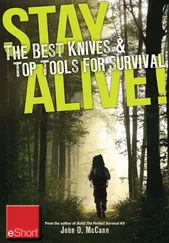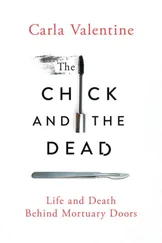The railway line had been completed to almost the Fifty-Kilo mark and small trains pulled by diesel engines were using it when one night Bodero was shaken awake by a Japanese guard. He and fifty other prisoners were to go to a nearby railway siding where they were told they were to unload a thousand sleepers.
Their hearts sank. Unloading a thousand railway sleepers would be a killer for fifty sick, undernourished men.
They were marched to the siding where a small locomotive had arrived hauling one closed wagon, far too small to hold a thousand railway sleepers.
A Japanese guard knocked a pin out of the wagon door. ‘Unload sleepers’, he ordered.
It turned out that the wagon held a thousand wooden clogs. It was all a matter of Japanese pronunciation-the ‘sleepers’ were actually ‘slippers’, and the work was child’s play. There was a bonus, too. The wooden clogs the Japanese called ‘geta’ were issued to the prisoners, the first footwear they’d had since their capture.
However, when they were told that each man would be issued with a Japanese uniform, they were ready to bail up. They’d risk getting shot before they’d wear the uniform of the enemy.
Once again, however, it was a matter of Japanese interpretation. The ‘uniform’ turned out to be the G-string worn by Japanese soldiers. The men were prepared to accept that. At least it was something to cover the genitals.
Each man was required to sign a receipt when the G-strings were handed out to acknowledge that they had received ‘one uniform complete, issued by the Japanese Imperial Army’.
Clothing wasn’t all that important, anyhow; food was. They were starving. It was like winning the lottery when Bodero and Les Baird, a bushman from near Tennant Creek, were given the job of carrying a bamboo basket of hens’ eggs from the railway siding back to the camp as food for the Japanese guards.
The large basket, strung between two bamboo poles resting on the men’s skinny shoulders, was to be carried along a narrow path through the thick jungle. Escape was futile, so no guards were with them. The proximity of so much food without supervision was too great a temptation. They put the basket on the ground and began sucking eggs. Soon the area around them was littered with empty eggshells.
Busy sucking, they suddenly had the feeling they were being watched. Their hearts somersaulted when they realised that a Japanese lieutenant from the camp was standing watching them, hands on hips.
The sucking of eggs promptly stopped, and those that were half-sucked were carefully returned to the basket. The two men waited for the Japanese officer to draw his sidearm. They thought it was the end for them. They prepared for the worst, but there was no shot. The officer merely grinned and then disappeared into the jungle.
Hearts thumping, Jim and Les didn’t stop again until they were back at the camp. They couldn’t figure out why they hadn’t been shot. Did the Japanese officer, not noted for leniency or compassion, feel sorry for the starving men? They’d never know, but whatever the reason, they knew they were lucky to be alive.
A few days later, a Burmese man was caught stealing food. The Japanese tied his wrists together with wire and dumped him outside the guardhouse. His flesh swelled and the wire cut deeply into his wrists. His cries of pain echoed around the camp all night, and by morning, he had disappeared.
To avoid disease, the prisoners maintained hygiene as best they could with what they had. Latrines at the Thirty-Kilo camp were open trenches. In addition, bamboo pipes were inserted into the ground all over the camp. The men urinated into these, and the urine was absorbed into the earth.
Sergeant Coombs, an Australian prisoner, was using one of the pipes one night when the Japanese camp commandant, Lieutenant Nito, saw him. Nito was roaring drunk, and for some obscure reason thought the prisoner was trying to escape, so he drew his pistol.
Coombs ran and the Japanese fired. The shot hit the Australian in the small of the back, but he managed to keep running and made it to the Australian officers’ quarters.
The drunken commandant ordered the officers to hand over the wounded man, but they refused, and Nito went away.
Coombs recovered from the wound and the kempeitai held an unusual hearing into Nito’s allegations that he’d shot him for trying to escape.
The trial produced one of the war’s most unlikely witnesses: a Japanese guard who had seen the shooting and gave evidence for the Australian sergeant. It was sufficient for the unlikely outcome of a finding in favour of the Australian.
Lieutenant Nito was removed from the camp. Even the Japanese guards, many of whom he had beaten up, weren’t sorry to see the last of him.
The death rate was high at the Thirty-Kilo camp, but the prisoners made use of the dead by burying diaries and other evidence in their graves that they hoped would be dug up after the war and incriminate the Japanese.
Jim Bodero was in a woodcutting party from the Thirty-Kilo camp when he saw another group of prisoners leading a native yak. Assuming that it was to be killed and used as meat, he told them, ‘Don’t forget your mates when you slice it up.’
‘It’s for the bloody Nips’, one of the men said. ‘They wouldn’t give us so much as the bloody thing’s roar.’
The yak’s Burmese owners had followed, and when their precious work animal was tied to a tree they wrung their hands and pleaded with the Korean guard not to kill it. He laughed, aimed his captured British .303 rifle and fired. The bullet went closer to the work party than to the yak.
The Korean took another shot. This time the bullet ricocheted around the clearing. Everybody ducked for cover.
One of the prisoners had had enough. He grabbed the rifle, brought the yak down with a shot behind the ear, and handed the rifle back to the Korean guard.
‘That’s how you do it’, the prisoner said.
Everybody held their breath. Taking a rifle from a guard was unheard of.
The Korean pulled a large jungle knife from his belt. This was it. The prisoner was dead for sure.
However, the guard confounded everyone by handing the knife to the prisoner and indicating that he was to use it to butcher the carcass.
Breathing a sigh of relief, the man cut the yak’s throat, drained the blood into a bucket and sliced up the meat. This was carried back to the camp, where the Japanese conducted a quick search in case a slab of yak steak had found its way down a prisoner’s laplap. Satisfied that none had, they took the meat and ignored the bucket of blood.
To hungry men, blood meant food. They left the bucket outside in the sun until the blood congealed, and then it was cut into rubbery squares that were roasted on the open fire. The men voted the yak-blood rissoles the best meal they’d had since the mouldy pie at the fall of Singapore.
Any food was memorable for men whose daily issue was a small amount of rice with an occasional pickled horse radish to provide vegetable content.
In nineteen months on the Death Railway, their only real meat came after Allied planes bombed Moulmein and killed several cavalry horses brought from Japan as officers’ mounts. These were the same horses that had come to Burma on the Toyahashi Maru , the hellship that had transported the prisoners to work on the railway, and in whose dung they had stood for the whole of that terrible voyage.
The horses carcasses were cut up and the meat was packed into open railway wagons and sent up the line as food for the prisoners of war. It was a long journey in sweltering tropical heat to the Thirty-Kilo camp, and by the time the horse meat arrived, it was crawling with maggots.
Still, rotten meat was food. The prisoners boiled it in a forty-four-gallon drum of water, and the maggots that rose to the surface were skimmed off and thrown away, bringing partly genuine protests from some of the men that the freshest meat was being wasted.
Читать дальше












